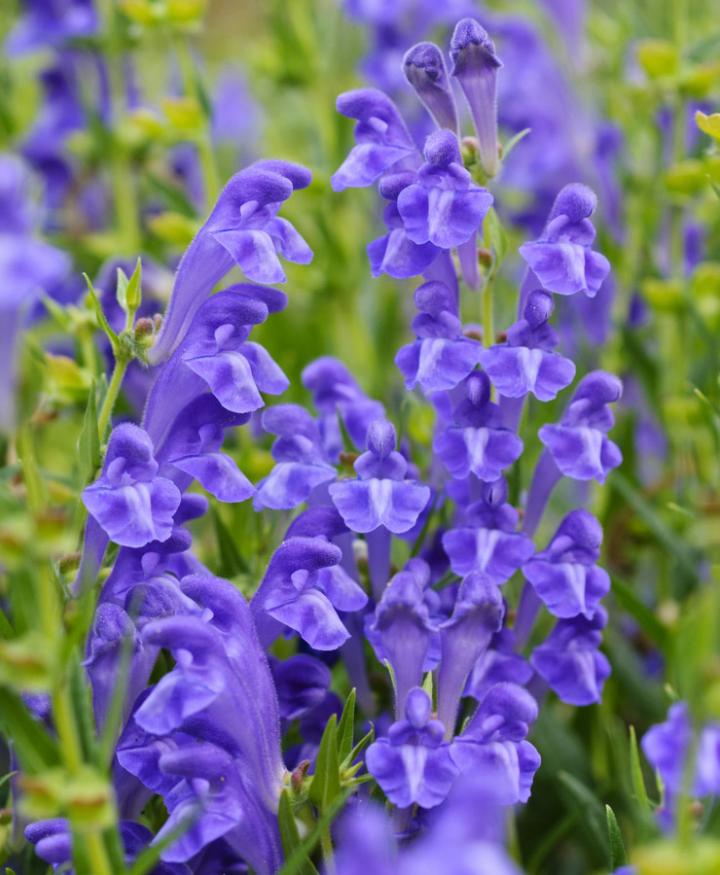
Credit: Botanikfoto, Royalty Free Image
The precious chemistry of a plant used for 2000 years in traditional Chinese medicine has been unlocked in a project that raises the prospect of rapid access to a wide array of therapeutic drugs.
Carried out by CEPAMS – a partnership between the Chinese Academy of Sciences and the John Innes Centre – the project has successfully delivered a high-quality reference genome of the mint-family member Scutellaria baicalensis Georgi.
The plant, commonly known as Chinese Skullcap, is well-known in Traditional Chinese Medicine (TCM) and is cultivated worldwide for its therapeutic properties.
Preparations of its dried roots, ‘Huang Qin’, show pharmacological activities conferred by novel compounds called flavonoids, including antibacterial, antiviral, antioxidant, anti-cancer, liver-protective and neuroprotective properties.
Despite the commercial interest and increasing demand for Scutellaria, improvements through breeding have been limited by a lack of genome information.
The team took DNA from a single plant at the Shanghai Chenshan Botanical Garden and used a combination of sequencing strategies to assemble 93% of the genome organised into 9 subsets of information or “pseudo chromosomes.”
The development means that researchers are now able to identify the genes that produce a wealth of valuable compounds, and then turn them into drug candidates using metabolic engineering techniques in the lab.
The sequencing project outlined in the journal Molecular Plant, also provides a reference gateway for genetic exploration of other valuable members of the Lamiaceae or mint family.
“When I started getting the analysis back on the genome sequence it was like a revelation: it showed at a fundamental level how the pathway to valuable compounds evolved.” says Professor Cathie Martin of the John Innes Centre and one of the authors of the study.
“The sequence is so good that it can improve the understanding of all the other genome sequences in the mint family. This is a large family of plants that is hugely important in Traditional Chinese Medicine and flavourings.”
This study highlights the current revival in TCM following the award of the Nobel Prize for Physiology and Medicine in 2015 to Professor You-you Tu for her discovery of artemisinin as a broad spectrum anti-malarial from Artemesia annua (wormwood).
Since then, pharmacology has started examining the healing properties of preparations from plants listed in the traditional texts, such as Shennong Bencaojing (The Divine Farmer’s Materia Medica) written between 200 and 250 AD. Such preparations have recently been reported as effective against a variety of complaints including as complementary cancer treatments.
Work on the reference genome and sequences from members of the same family has already started to deliver valuable information that could be applied to development of a wider range of remedies.
“This particular plant makes the bioactive compounds in the root, which means you have to wait three years for the plant to get big enough and of course in taking the root you destroy the plant,” said Professor Martin.
“We’ve screened some members of the same family that make similar compounds in the leaves which means you could get more sustainable therapeutics taken in a different way,” she added.
###
The full study: The Reference Genome Sequence of Scutellaria baicalensis Provides Insights into the Evolution of Wogonin Biosynthesis is published in Molecular Plant journal.
Media Contact
Adrian Galvin
[email protected]
Related Journal Article
http://dx.




